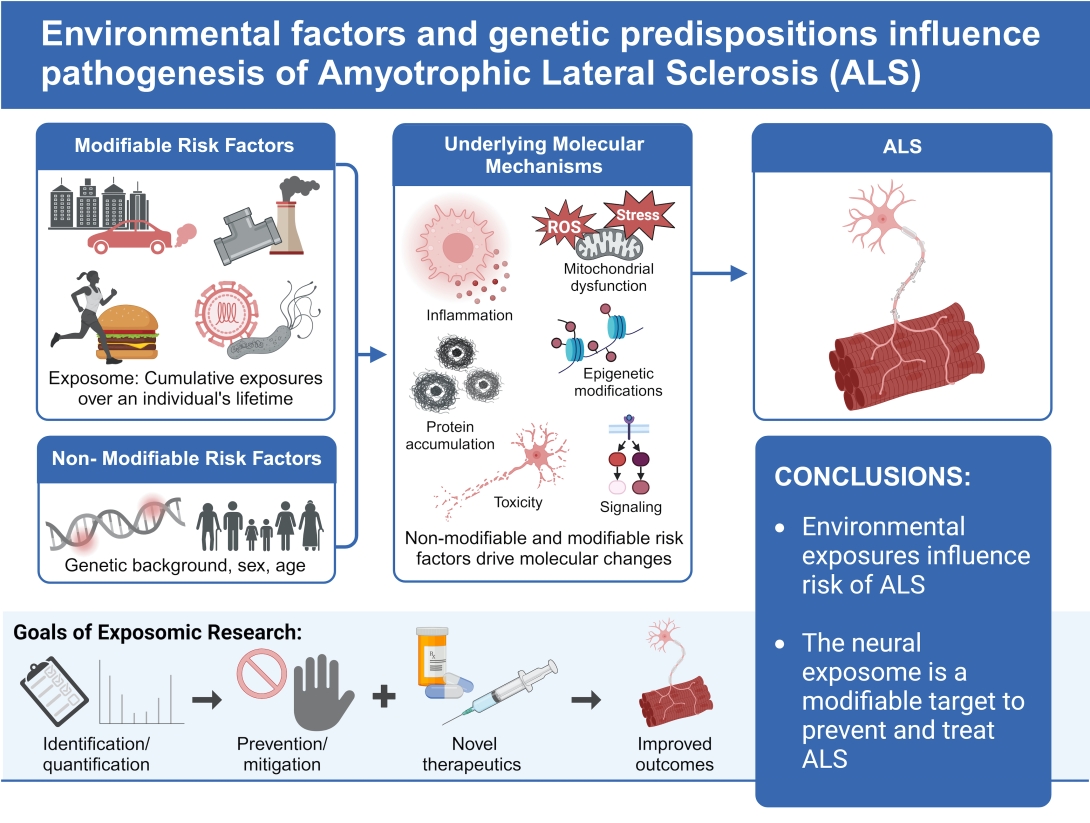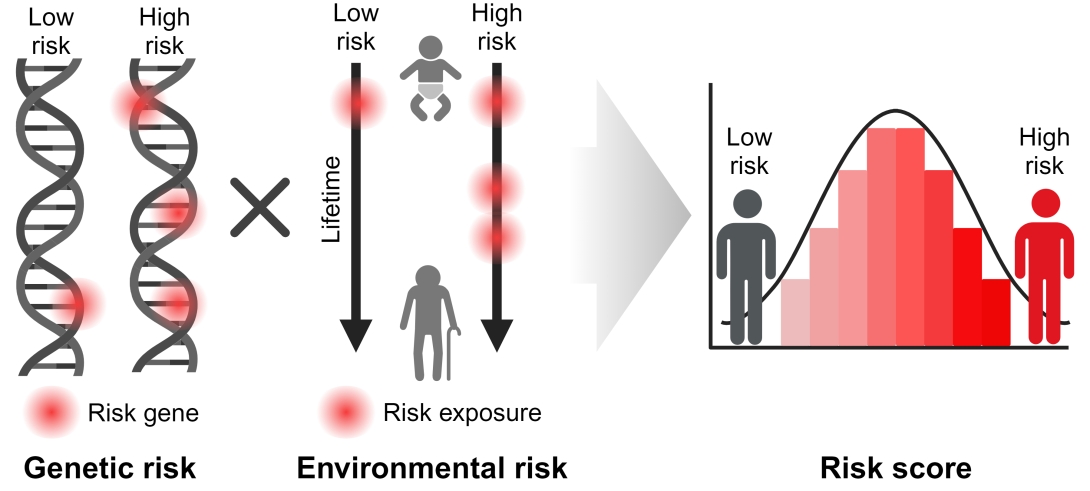What is the exposome?
The exposome refers to the full spectrum of environmental exposures that an individual encounters throughout their life, including everything from pollutants in the air and water to lifestyle factors like diet and stress.
Why the exposome and ALS?
Understanding the exposome is crucial for studying ALS as there is growing evidence that ALS results from a complex interplay between underlying genetics disposition and environmental factors. We hope to identify specific modifiable environmental exposures that increase the risk of developing ALS and elucidate the mechanisms through which these factors promote disease. We are also interested in understanding how different environmental factors interact with an individual’s genetic makeup to influence disease risk and progression.
Pinpointing ALS risk factors could help identify populations at higher risk of ALS and pave the way for preventive measures to reduce exposure, such as through the implementation of environmental regulations, lifestyle changes, or public health interventions. Additionally, improved understanding of the exposome and the underlying mechanisms by which it promotes ALS development and progression may facilitate the creation of novel treatment strategies and personalized interventions tailored to the individual needs of specific patients, thereby enhancing therapeutic efficacy and improving outcomes. Ultimately, our goal is to pioneer novel therapeutics or potentially preventative interventions, representing a critical step towards combating this devastating neurodegenerative disorder.

Key Initiatives:
We continue to investigate why the Midwest, especially Michigan, has the highest ALS rate in the country.
NIH Transformative Research Award:
Through our National Institute of Health (NIH) Transformative Research Award, we are exploring the intersection of environmental exposures, genetics, inflammation, and other factors to identify risk factors, develop scoring systems that predict risk and progression, and understand the mechanisms by which exposures cause disease.
EXPOSE-ALS:
We were also recently awarded a high-profile grant from the Centers for Disease Control and Prevention (CDC) to recruit a large cohort of at-risk individuals working in occupations that increase ALS risk, such as manufacturing. Our study will adopt what is called a prospective study design, which will query individuals at-risk of ALS about their exposures in real-time, under the premise that some may develop ALS in time, to accurately capture data before disease onset. This unique and novel study design will generate crucial insight into early disease mechanisms to accurately identify the full scope of exposure that increases ALS risk.
Immune System:
We know the immune system plays both a protective and destructive role in ALS progression based on changes in immune cell types. We are examining how immune system dysregulation contributes to ALS progression and profiling immune cell types from ALS patients to create a composite immune “fingerprint” capable of predicting the course of disease.
What we have found:
Through our work, we have consistently demonstrated that specific occupations and occupational exposures are linked to onset and progression of ALS. Additionally, we identified body mass index and exposure to persistent organic pollutants (POPs), air pollutants, and metals as modifiable risk factors associated with ALS.
Furthermore, we have created genetic and environmental risk scores to predict ALS disease susceptibility and progression. Risk scores are numerical representations of an individual’s susceptibility to a particular trait or condition, i.e. ALS, generated by assessing cumulative genetic mutations or environmental exposures. For example, using environmental risk scores, we demonstrated the certain mixtures of POPs increase ALS risk to a greater extent than do individual POPs alone.

Finally, we are examining the mechanisms underlying ALS onset and progression, with a particular focus on the gut microbiome, the community of bacteria, viruses, and fungi that inhabit the digestive tract. We found that distinct microbiome signatures correlate with lipid metabolites in ALS patients and specific gut microbes and metabolites strongly associate with ALS functional status.